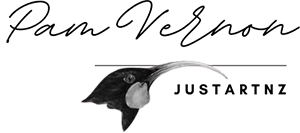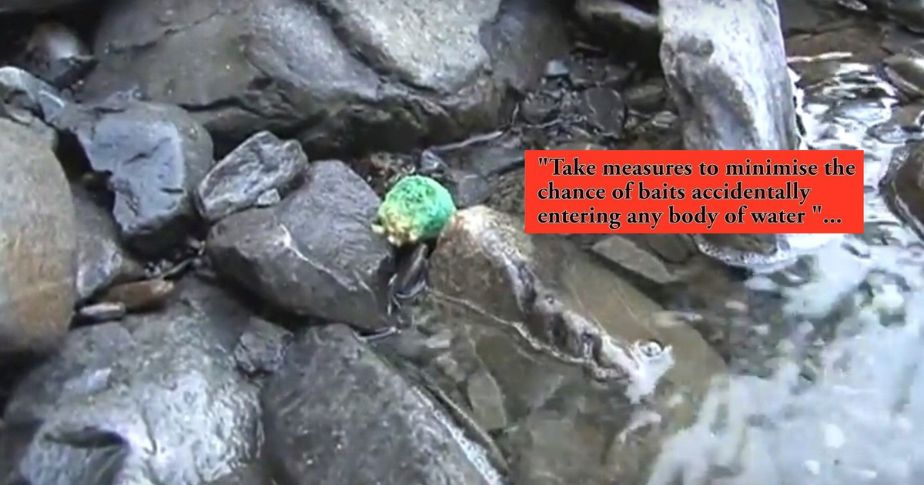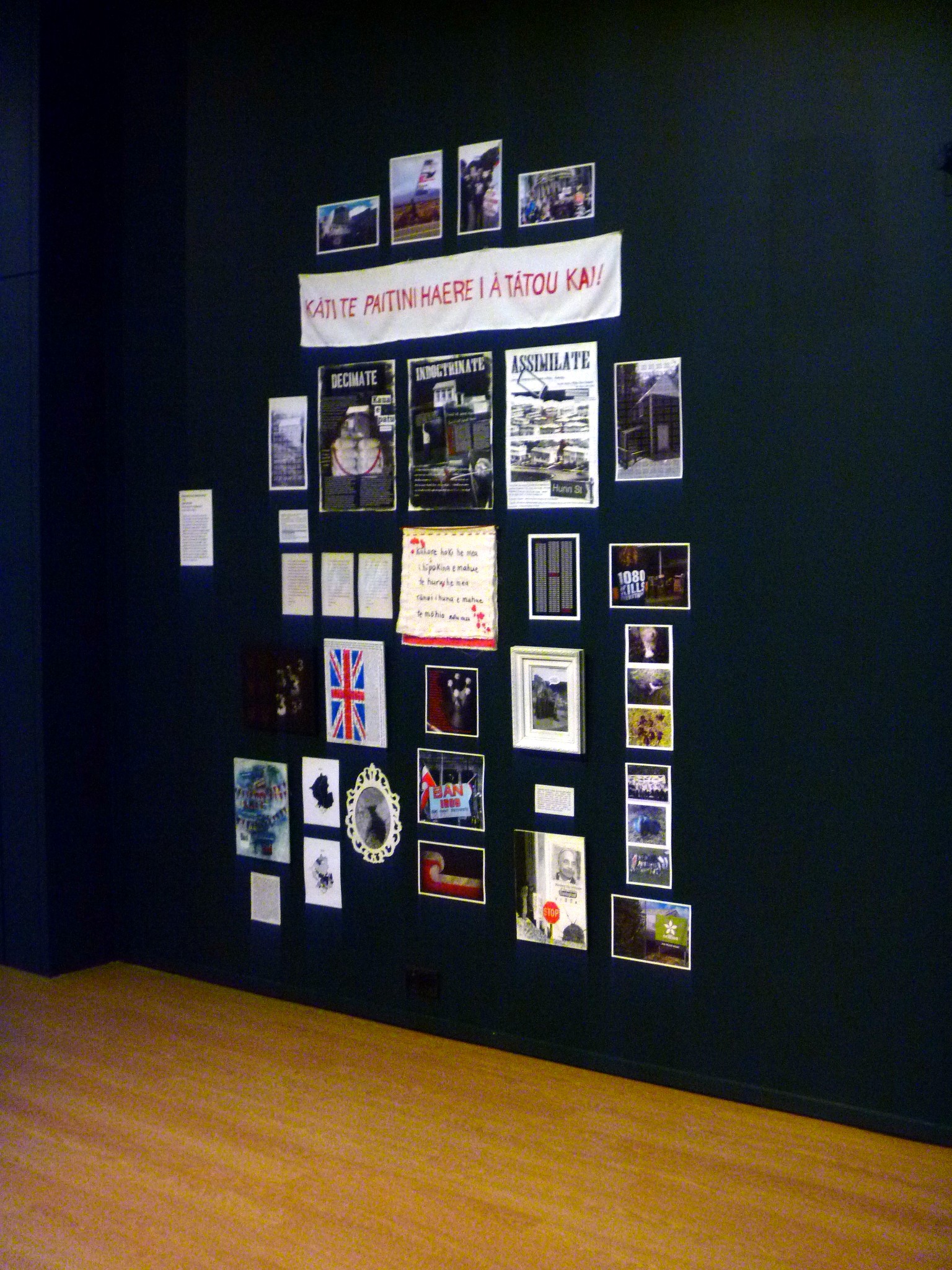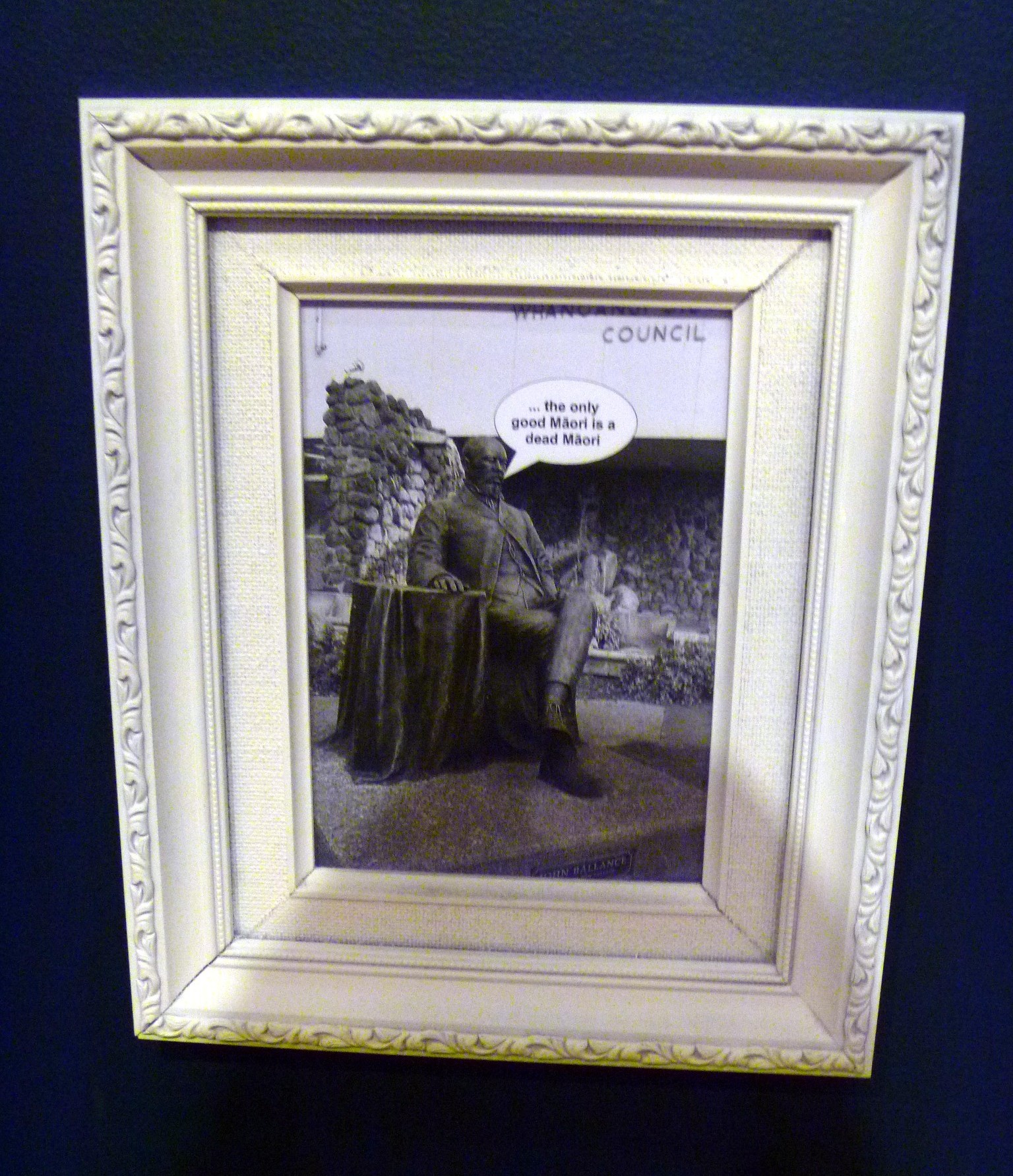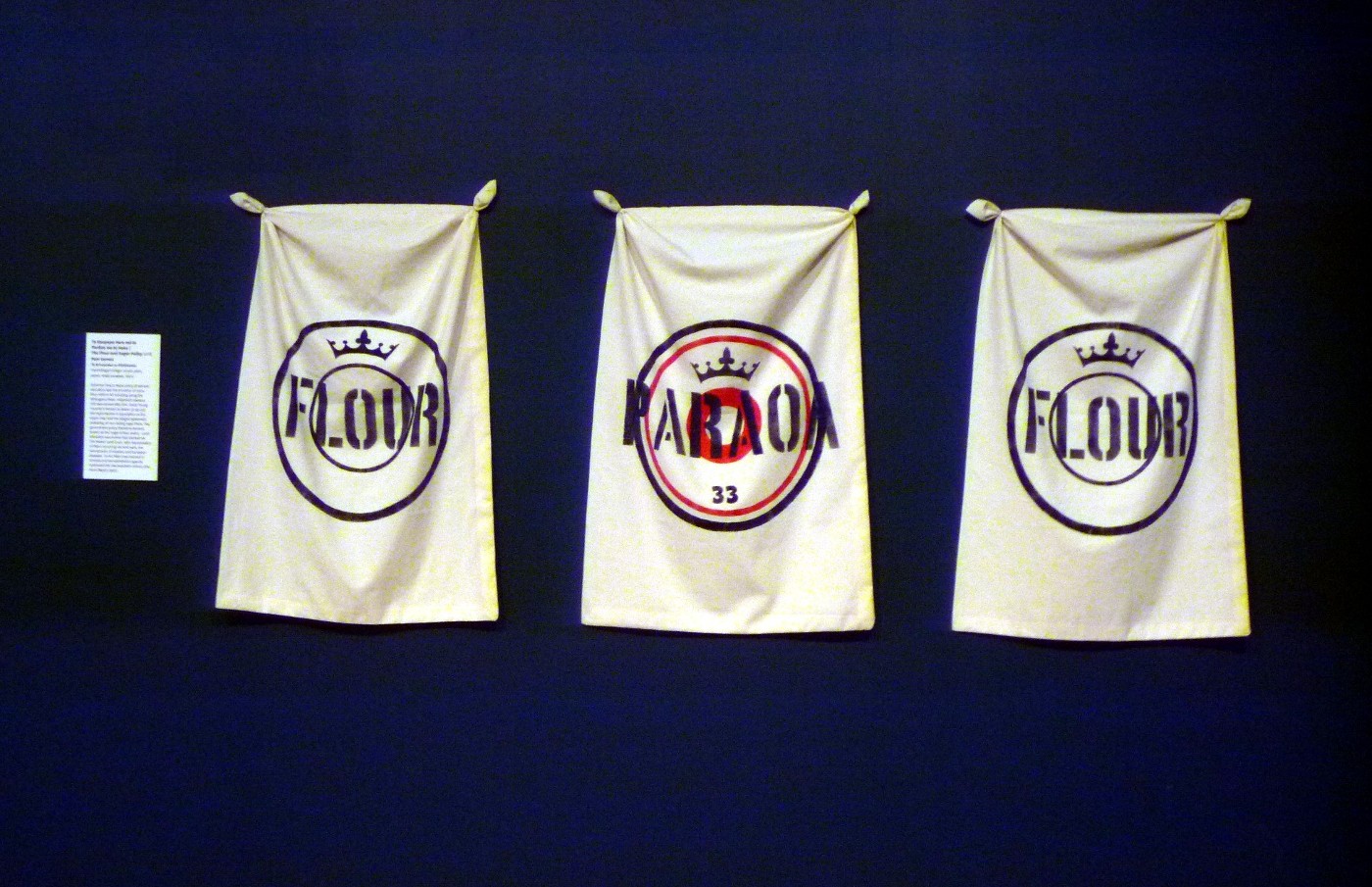This post comes from our graduation exhibition in 2018. It was written and featured at envirowatchnz.com
I had just completed a Bachelor of Māori Visual Arts at Putahi a Toi ki Āpiti in Palmerston North.
The theme of my work is poison, in particular 1080 & arsenic, which encapsulates the ongoing issues we are facing today … well at least those of us who are concerned about the toxic chemicals that we are involuntarily immersed in daily. These two poisons interweave throughout our history, and are only two of 280-300 active pesticide ingredients registered for use in NZ (read Dr Meriel Watts’ The Poisoning of NZ, p19). A must see on 1080 poison is Poisoning Paradise, a four times award winning documentary produced by The GrafBoys. The Government banned it on NZ's national television.
The poisoning of our food, our water, our people is not new. The arsenic episode began in the nineteenth century with what was known as the NZ Government’s ‘Sugar & Flour’ policy, where non-selling Māori were targeted with aid in the form of flour mills and other ‘goodies’ to entice them to sell their land. Subsequently the flour became poisoned (as has happened & is documented in other colonized nations, for example Australia and the First Peoples there as documented by Bruce Elder in 'Blood on the Wattle') to the extent in the Upper Whanganui River there was a notable decrease in the Māori population. The poisoning was also discovered & documented by missionary Rev Richard Taylor in his journals. You can read about it in David Young’s Woven by Water. It is also of course in the oral histories of the River & was spoken about in the Treaty hearings. Tariana Turia (former politician, co-leader of the Māori Party) also wrote about this in the Taranaki Star at the passing of Sir Archie Taiaroa, from the River. Sir Archie had wanted the stories to be made known, saying that Māori were forced to rely on flora and fauna to avoid being poisoned. My great uncle from the Whanganui River died of suspected poisoning. What a damning episode to the record of a so called ‘Christian’ nation. Civilizing the ‘savages’? Who were the savages? And so it goes on today with the systematic dropping into our environment, the deadly ecotoxin called 1080.
On this theme I created an assemblage, after the work of indigenous Australian artist Tony Albert, detailing the current poisoning of our waterways and food by the aerial 1080 program operating here in Aotearoa (NZ). In my research on that I have seen testimony of concerned Whanganui people subject to aerial drops who saw incidences of miscarriages & cancer immediately after one. Like the cancer clusters around the cell towers, the authorities of course deny all of this. Dr Peter Scanlon (late) detailed that there have been little if any studies on the effects of 1080 on the unborn. Remember the post about how two midwives advised their pregnant patients to leave town when they heard of an imminent 1080 drop? I would certainly be erring on the side of safety & leaving also were I in their position.
Returning to the assemblage it contains images I’ve used with the permission of the donor* featuring the 2018 hikoi with Emile Leaf & Alan Gurdon. The basic message is … ‘Kāti te paitini haere i ā tātou kai!’ … ‘stop poisoning our food!’ It also features the assimilation drive of the colonists who desired land & and an eventual absorption of Māori into the white race. Well documented if you search … Angela Ballara’s ‘Proud to be White’ is a good start. The newspaper archives she cites speak volumes. Wiping out an ethnic group is technically called genocide however that is well nigh a dirty word in many circles today.
Below is the final gallery version.
Te Kaupapa Here mō te Parāoa me te Huka | The Flour and Sugar Policy
Artist: Pam Vernon, Te Atihaunui-a-Pāpārangi
Description: Governor Grey’s 1840s policy of aid and education saw the provision of many flour mills in NZ including along the Whanganui River. Matahiwi’s Kawana mill was named after him. David Young records in Woven by Water (p 49-50) the rapid decline in population on the upper river and the alleged systematic poisoning of non-selling hapū there. The government policy therefore became known as the ‘sugar & flour policy’. Land alienation was further fast tracked via The Native Land Court, with depopulation of Māori occurring via land wars, the introduction of muskets and European diseases. Te reo Māori was banned in schools and the assimilation agenda continued into the twentieth century (the Hunn Report,1960).
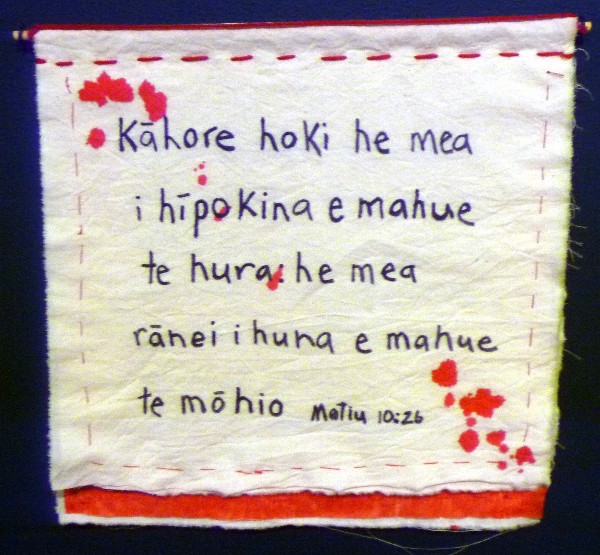
Part of the assemblage is this Biblical scripture taken from Matthew , translated it means:
“…for there is nothing concealed that will not be disclosed, or hidden that will not be
made known” referring to the secret poisoning of Māori who would not sell their lands.
There is another scripture under the visible one (second ‘page’) that quotes Isaiah 26:21, “See, the Lord is coming out of his dwelling to punish the people of the earth for their sins. The earth will disclose the blood shed on it; the earth will conceal its slain no longer.
The image below is also part of the assemblage detailing what a former NZ Premier John Ballance had to say about Māori. He was called a ‘nation builder’.
John Ballance, dubbed a ‘nation builder’ is renowned for his quote “the only
good Māori is a dead one” currently in place of honour outside the
Whanganui District Council buildings
The work below titled ‘Ekoruhe 20:13 | Exodus 20:13’ is an installation featuring three flour bags. I was told years ago by a kuia in our home town that the flour bags marked for poisoning had a red circle on them. I’ve taken artistic license to add red circles to the bag marked ‘paraoa’ (flour), although I am unsure how the red circle originally looked.
Description: “Kaua e patu” (do not kill), are words from the Bible, the book brought here by the missionaries. Governor Grey’s Flour and Sugar policy was said to be partly an attempt to reduce Māori ‘rebellion’ against land acquisitions, targeting areas where he hoped to acquire land. With the alleged poisoning of Māori, they were forced to use their knowledge of flora and fauna to avoid death. Used globally to this day, the destruction of indigenous food sources on colonial fronts is a time-worn tactic. Currently, another poison is being dropped into our waterways, contaminating both our water & our wild food.
The work below titled ‘E Paitini ana i te Whenua me te Wai | Poisoning the Land & the Water’ speaks for itself.
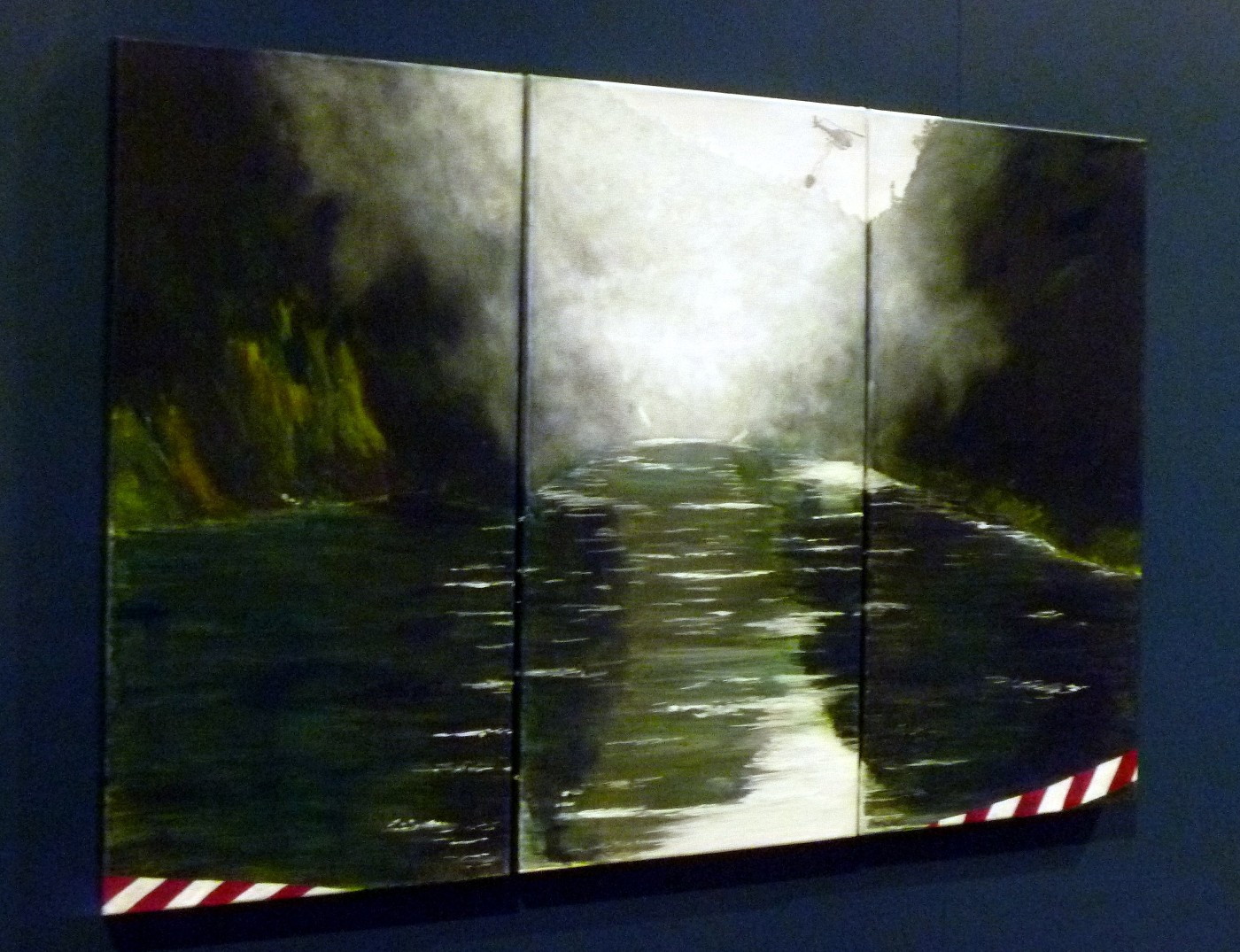
Description: For over 50 years, 1080 poison, a class 1A ecotoxin with no antidote, banned in most countries, has been dropped regularly onto NZ soil, currently at amounts of 4,000 tonnes per annum, enough to kill 60 million people. The Government recently changed legislation so that it can drop 1080 into the waterways without a resource consent, excluding the operation from Resource Management Act protection. A retired NZ Doctor recently warned that if you die from 1080 poisoning, nobody will know because Doctors are bullied by the MOH into not testing for it.
Below is the work titled E Paitini ana i ngā Manu | Poisoning the Birds. This also speaks for itself.
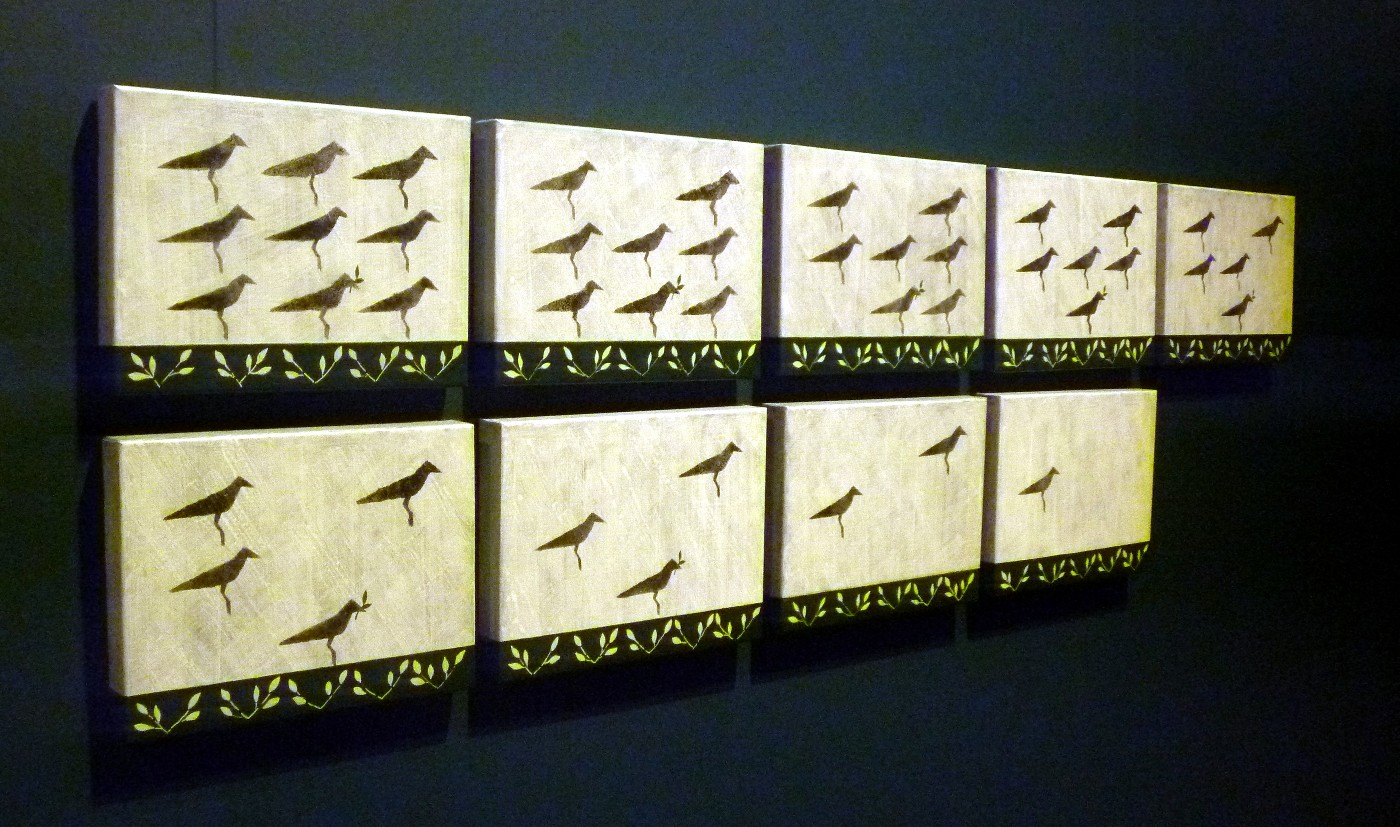
E Paitini ana i ngā Manu | Poisoning the Birds, Artist: Pam Vernon
Te Atihaunui-a-Pāpārangi
Description: It’s claimed by DoC that 1080, a class 1A ecotoxin targets pests, however, originally an insecticide, 1080 kills all oxygen breathing animals and organisms (Dr M Watts 2010). A 2002 Otago 1080 drop killed an estimated 10,000 non-target birds. Over 5 years, of 89 dead tagged kiwi in the Tongariro Forest, none were tested for 1080. In 1984 Brodifacoum exterminated Tawhitinui Island’s entire weka population.
The bird image is from a carved kōkako from Te Keepa Te Rangihiwinui’s house, Huriwhenua, at Ranana on the Whanganui River. It’s speculated it may symbolize the raven sent forth from Noah’s ark (David Young, Woven by Water).
Finally is the work titled St Joseph’s Church & Convent at Hiruhārama. Hiruhārama is on the Whanganui River, home of the pictured Catholic mission presence and Sister Aubert.

St Joseph’s Church & Convent at Hiruhārama . Artist: Pam Vernon
Te Atihaunui-a-Pāpārangi
Description: Patiarero on the Whanganui River was re named Hiruhārama (Jerusalem) by missionary Reverend Richard Taylor in the 1850s, as were many other Whanganui River settlements. In 1892, Suzanne Aubert (known as Mother Mary Joseph) established the congregation of the Sisters of Compassion, a charitable and religious order, where they cared for abandoned children. Their presence is still there today.
(Thanks to the Sisters of Compassion for permission to use their photograph).
Thanks also to Rere Tihema for the use of his protest images.
I acknowledge all the kaiako at Putahi a Toi Massey & in particular Kura Te Waru Rewiri from whom I’ve learned so much. My learning is a journey that’s still in progress.
(As chance would have it, my two adult children, both artists in their own right, were also exhibiting at the same time in the Te Manawa Gallery in Palmerston North. The feature article from the Manawatu Standard at the time will give you the background to their work also. We were all interviewed as a trio).
And finally, a correction regarding the Standard article. This is a misunderstanding by the writer who assumed I was from Patiarero going presumably from my painting the Hiruhārama image. I whakapapa to the River through my father’s mother's side (see ‘about the author’ at the main menu) and do believe we link to Hiruhārama …
I am unsure which is our marae however. My grandmother did attend the school at the convent. Her name was Ani Roti. Her mother was Kiri Te Huatahi and her father, William Ross. Kiri's father was Toi Te Huatahi and her mother Puketiotio, Toi's first wife. Kiri, my great grandmother, was taken back up the river for burial however we are unsure just where. Perhaps someone reading this will be able to make some connections for me.
